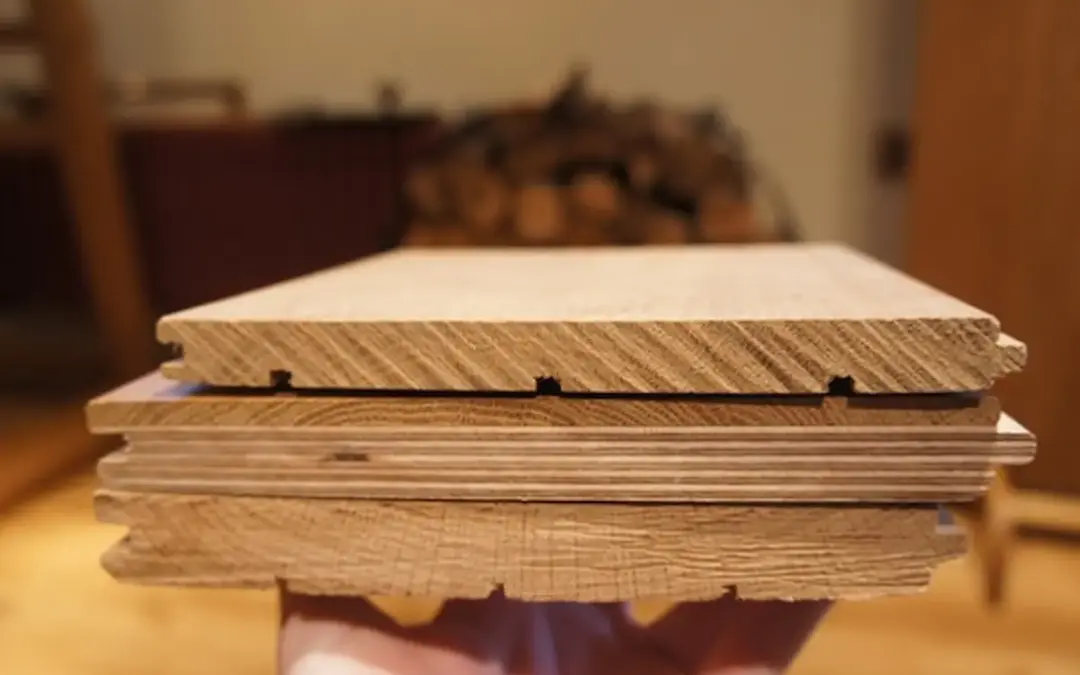Wood flooring is a popular choice among homeowners due to its timeless appeal, durability, and natural beauty. When considering wood flooring for your home, one of the crucial factors to consider is the thickness of the planks. The thickness of the wood flooring can impact its stability, performance, and overall longevity. In this article, we will explore the different thickness options available for wood flooring and discuss which thickness is best suited for various applications.
1. Introduction
Wood flooring adds elegance and warmth to any space. It is available in various species, finishes, and plank sizes. The thickness of the wood flooring is an essential aspect to consider as it directly impacts the performance and longevity of the floor. Let’s delve deeper into the significance of wood flooring thickness.
2. Understanding Wood Flooring Thickness
The thickness of wood flooring refers to the measurement from the top surface of the plank to its bottom surface. It is typically measured in millimeters (mm) and can range from as thin as 8mm to as thick as 25mm or more. The thickness of the flooring is determined during the manufacturing process and influences its structural integrity and stability.
3. The Importance of Wood Flooring Thickness
The thickness of wood flooring plays a vital role in determining its ability to withstand wear and tear, impacts, and moisture. Thicker flooring tends to be more durable and can better resist denting and warping. Additionally, the thickness affects the installation method, acoustics, and even the feel underfoot.
4. Factors to Consider
Several factors should be taken into account when choosing the appropriate thickness for wood flooring. These factors include the expected traffic and usage, subfloor condition, installation method, and acoustic considerations.
4.1 Traffic and Usage
High-traffic areas like hallways, living rooms, and kitchens require thicker flooring to withstand heavy footfall and potential furniture movement. Thicker planks provide better support and minimize the risk of visible wear and damage over time.
4.2 Subfloor Condition
The condition of the subfloor can affect the choice of wood flooring thickness. If the subfloor is uneven or prone to movement, thicker flooring can help to level the surface and provide added stability.
4.3 Installation Method
Different thicknesses may require specific installation methods. Thicker planks often utilize a tongue-and-groove system, while thinner options may use adhesive or floating installations. Considering the installation method is crucial to ensure a successful and long-lasting wood floor.
4.4 Acoustic Considerations
Thicker wood flooring can offer improved acoustic properties, reducing the transmission of sound between floors. This is particularly important in multi-story buildings or rooms where noise reduction is desired.
5. Common Thickness Options
Wood flooring is available in a variety of thickness options. Let’s explore the most common thickness ranges and their suitability for different applications.
5.1 8mm and Below
Wood flooring with a thickness of 8mm and below is often considered budget-friendly and suitable for areas with low foot traffic, such as bedrooms or closets. However, it may be less stable and more prone to warping or damage over time.
5.2 10mm to 12mm
This thickness range is a popular choice for residential applications. It provides a good balance of stability and affordability, making it suitable for living rooms, dining rooms, and other moderate-traffic areas.
5.3 14mm to 15mm
Wood flooring within this thickness range offers enhanced durability and stability. It is ideal for high-traffic areas like entryways, kitchens, and hallways, where increased resistance to wear and tear is essential.
5.4 18mm and Above
Thicker wood flooring, such as 18mm and above, provides maximum stability and longevity. It is commonly used in commercial settings or areas with heavy foot traffic, ensuring exceptional durability even in demanding environments.
6. Choosing the Right Thickness
Choosing the right wood flooring thickness depends on various factors, including the expected usage, location, and budget. It is crucial to consider the specific needs of your space, as well as your personal preferences and priorities. Consulting with flooring professionals can provide valuable guidance and ensure you make an informed decision.
7. Conclusion
The thickness of wood flooring significantly impacts its durability, stability, and overall performance. By considering factors like traffic, subfloor condition, installation method, and acoustics, you can choose the right thickness for your specific needs. Whether you opt for thinner planks for less frequented areas or thicker ones for high-traffic spaces, selecting the appropriate wood flooring thickness will contribute to a beautiful and long-lasting floor.
8. FAQs
Q: Can I install thin wood flooring in high-traffic areas?
A: While thin wood flooring can be installed in high-traffic areas, it may be more prone to wear and damage over time. Thicker flooring options are generally recommended for better durability.
Q: Does the thickness of wood flooring affect its stability?
A: Yes, thicker wood flooring tends to be more stable and less prone to warping or movement.
Q: What installation method is suitable for thicker wood flooring?
A: Thicker wood flooring often utilizes a tongue-and-groove installation method, providing enhanced stability and durability.
Q: Can thicker wood flooring help with sound reduction?
A: Yes, thicker wood flooring can contribute to improved acoustic properties, reducing sound transmission between floors.
Q: Which thickness range is best for commercial applications?
A: For commercial settings or areas with heavy foot traffic, thicker wood flooring options, such as 18mm and above, are recommended for their exceptional durability.

